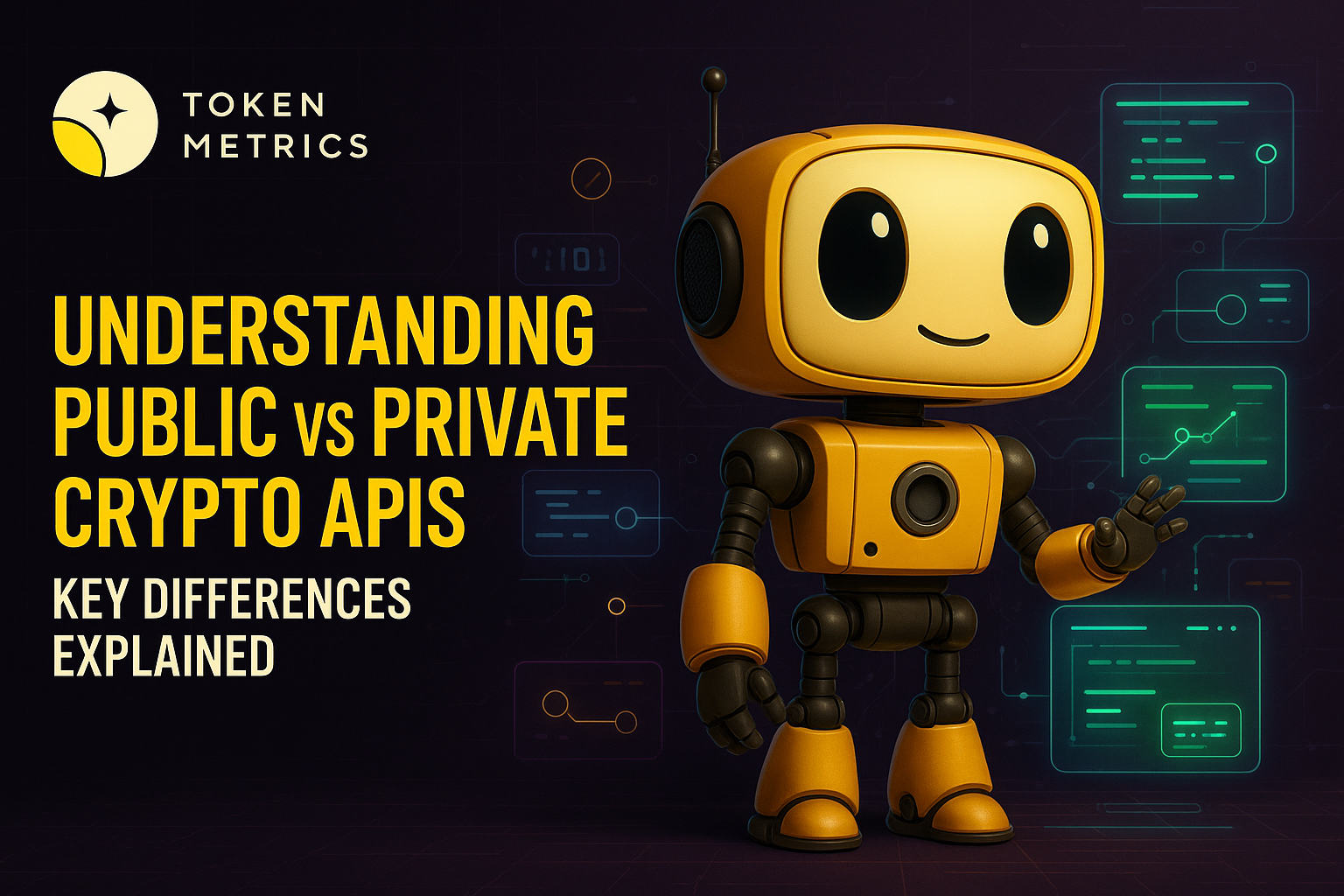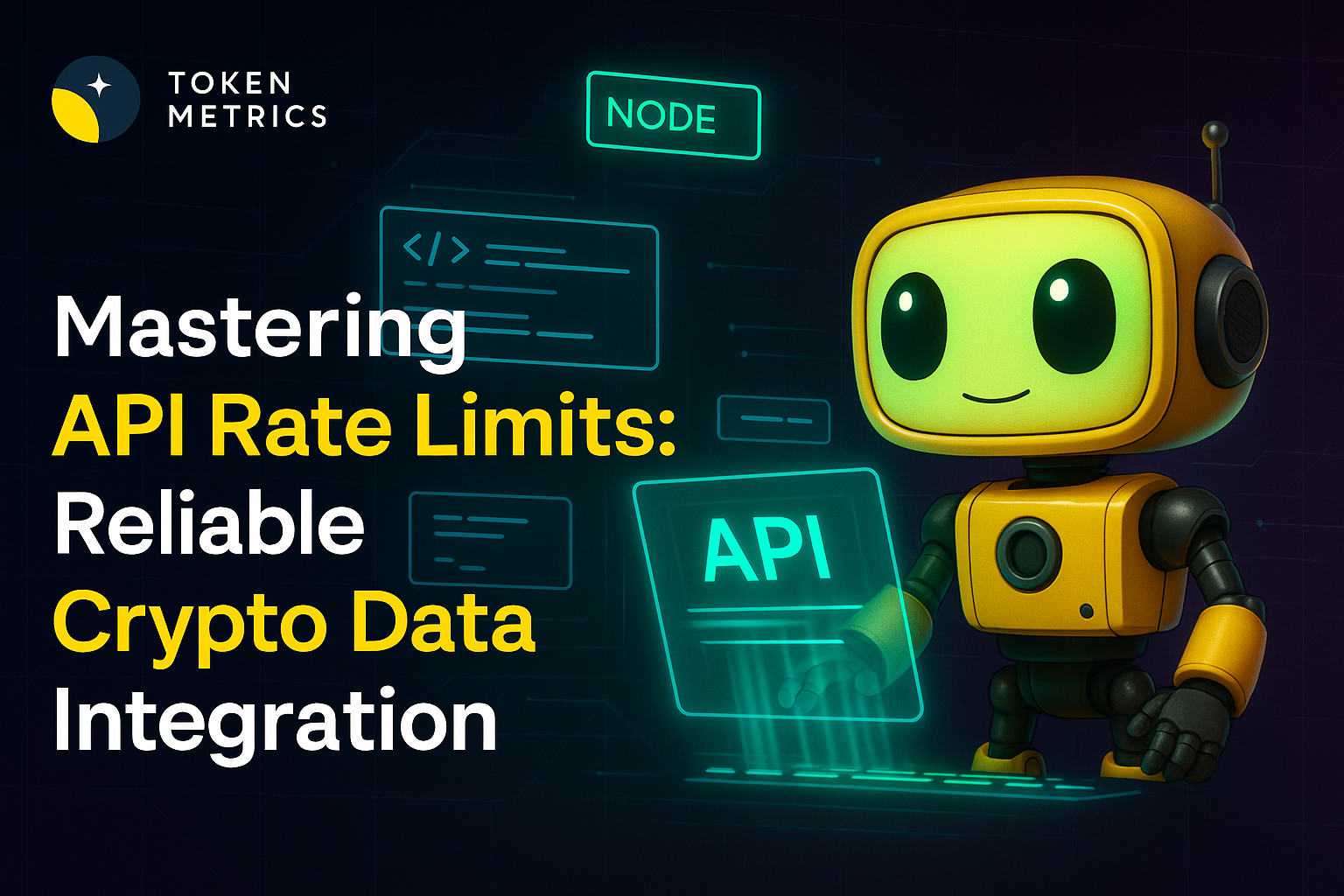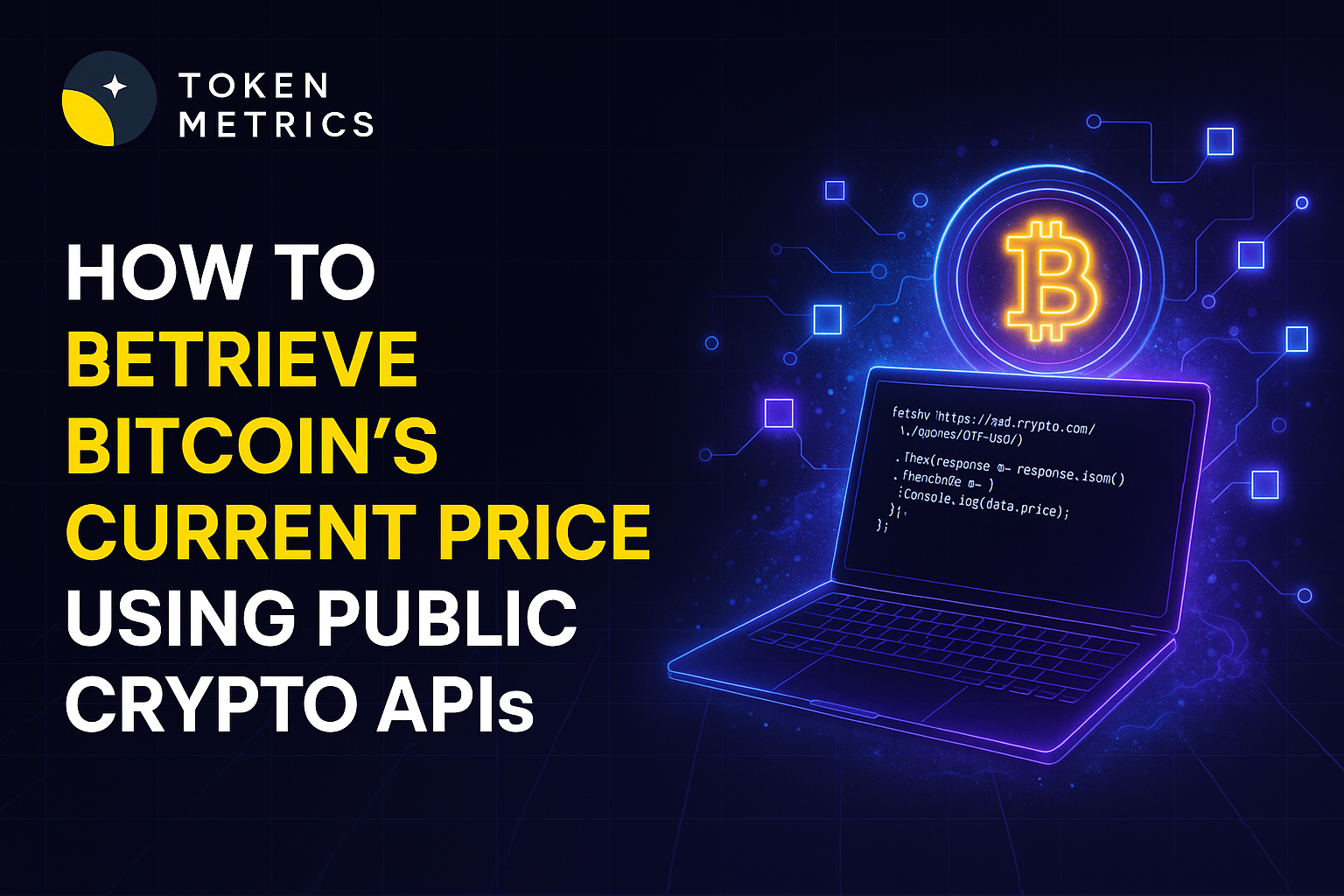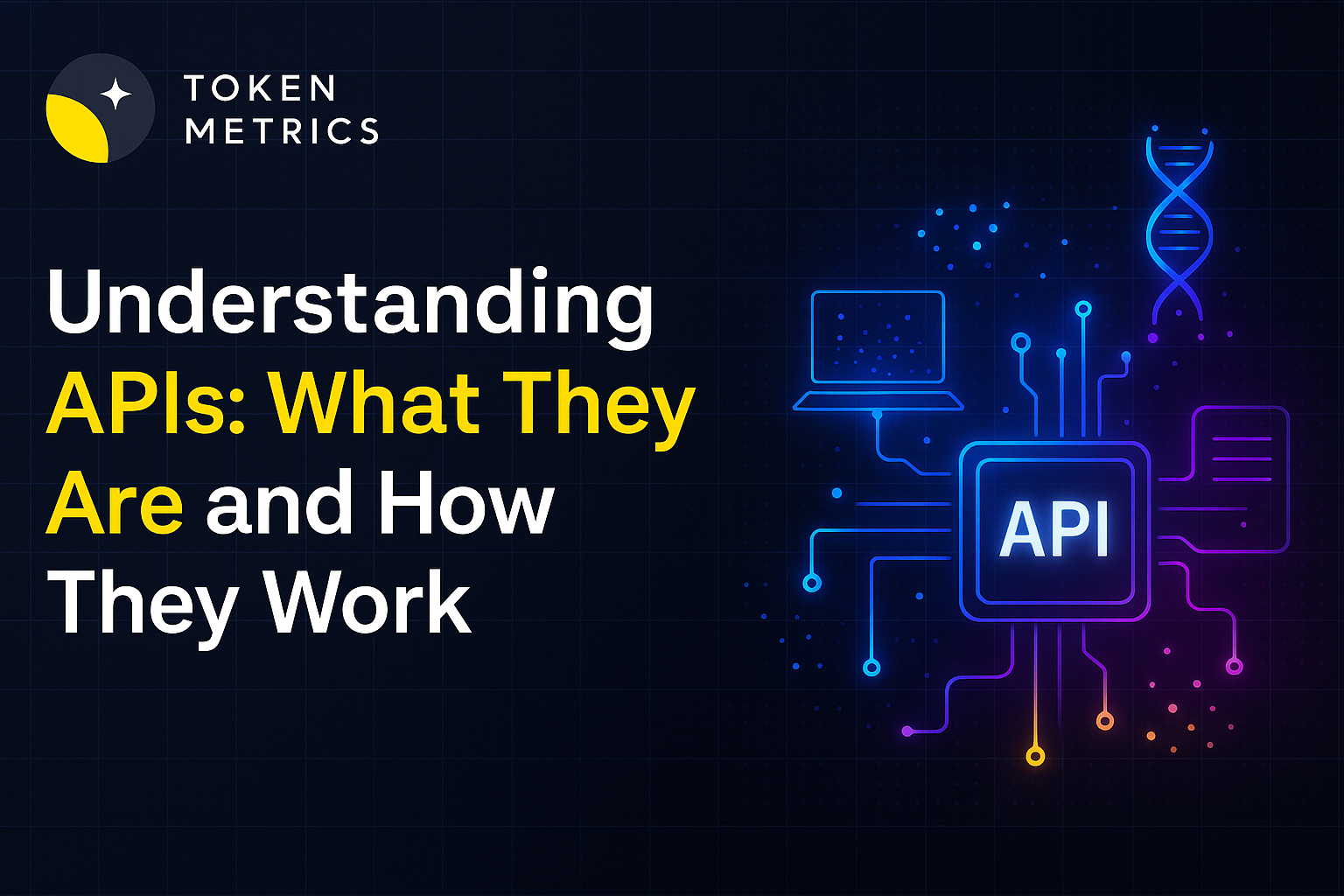Understanding Public vs Private Crypto APIs: Key Differences Explained

APIs power much of the innovation in the crypto space, but developers and analysts often face a key technical crossroads: Should you use a public or a private crypto API? Each API type serves different use cases and comes with its own set of advantages, limitations, and security requirements. Understanding these differences is critical for building effective crypto platforms, bots, and research tools.
What Are Crypto APIs?
Crypto APIs (Application Programming Interfaces) are sets of rules that let software applications interact with blockchain data, exchanges, wallets, or analytical tools. APIs bring order to a decentralized landscape, making it possible to access real-time prices, submit transactions, retrieve on-chain activity, or gather analytics—often without manually interacting with the blockchain itself.
There are two primary categories of crypto APIs:
- Public APIs – Open, broadly accessible interfaces providing non-sensitive data or public blockchain information.
- Private APIs – Restricted endpoints requiring authentication and permissions, allowing access to user-specific or sensitive operations.
But how do these two categories truly differ, and why does it matter for crypto application development and data consumption?
Public Crypto APIs: Open Access to Blockchain Data
Public crypto APIs typically provide access to information that is either non-sensitive or already visible on public blockchains. Examples include:
- Market prices and trading volume
- Blockchain explorer data (transactions, blocks, network statistics)
- Token metadata and listings
- General protocol or exchange status
Key traits of public APIs:
- No login required: Most public APIs are accessible without authentication, although rate limits may be enforced to prevent abuse.
- Great for data feeds: Ideal for researchers, portfolio trackers, or analytics dashboards needing large-scale, up-to-date datasets.
- Limited functionality: Public APIs do not let you interact with personal accounts, make trades, or perform actions that expose user data.
For instance, if you want to build a website displaying the latest Bitcoin price or trending DeFi projects, you’d usually rely on public crypto APIs.
Private Crypto APIs: Secure, Authenticated Endpoints
Private crypto APIs open the door to more sensitive and powerful functionality, but require strict controls. They are generally used for:
- Accessing user-specific account balances
- Placing, modifying, or cancelling trades on an exchange
- Transferring funds or managing API keys
- Retrieving private analytics, custom watchlists, or signals
Key characteristics include:
- Authentication required: Commonly via API keys, OAuth tokens, or signatures. This protects user data and controls access.
- Security and privacy orientations: Implemented with strict rate limiting, encryption in transit, and granular permissions.
- Risk of exposure: Poorly managed private keys or API credentials can lead to loss of control over accounts or assets.
Developers building personal portfolio management tools, automated trading bots, or custodial dashboards integrate private crypto APIs to enable a customized, authenticated user experience.
Key Differences: Public vs Private Crypto APIs
Understanding the distinctions helps teams design more robust crypto products:
- Access & Security: Public APIs are low-risk and have minimal restrictions, whereas private APIs can expose user or financial data if mishandled.
- Rate Limiting: Public APIs have moderate limits to ensure fair usage, while private endpoints often get higher quotas based on trust and verification.
- Functional Scope: Public endpoints only relay general data; private endpoints enable actionable operations like trading or transferring assets.
- Use Case Alignment: Public APIs suit real-time charts, analytics, and research, while private APIs drive account-specific dashboards, bots, and custom integrations.
The choice often comes down to your project requirements: If you just need publicly available blockchain data or market feeds, public APIs suffice. If your solution needs to modify user data or interact on behalf of a user, private APIs with strong authentication are mandatory.
Choosing the Right API for Secure Crypto Development
Several factors help determine whether a public or private crypto API is appropriate:
- Data Sensitivity: Is the data or action user-specific or can it be safely shared with the public?
- Application Purpose: Are you building an analytics dashboard (public API) or a trading bot (private API)?
- Security Posture: Does your team have processes for securely storing and rotating API keys?
- API Provider Reputation: Evaluate available documentation, historical uptime, and support—especially with private APIs.
Following best practices for handling API credentials—such as storing secrets off-chain, using environment variables, and enforcing minimal permission scopes—can greatly reduce risk.
Build Smarter Crypto Apps & AI Agents with Token Metrics
Token Metrics provides real-time prices, trading signals, and on-chain insights all from one powerful API. Grab a Free API Key
Frequently Asked Questions: Public vs Private Crypto APIs
What can I build with public crypto APIs?
Public crypto APIs help developers launch apps like price tickers, market dashboards, blockchain explorers, and analytics tools that require broadly accessible, non-sensitive data. They are ideal for gathering real-time feeds or tracking on-chain activity without user authentication.
How do private crypto APIs handle security?
Private crypto APIs protect endpoints with authentication mechanisms like API keys, OAuth, or digital signatures. This ensures only authorized clients can fetch sensitive information or perform actions like trading or withdrawals. API providers also employ rate limits and monitor usage for suspicious behavior.
Are rate limits different for public vs private APIs?
Yes. Public APIs often have stricter rate limits to prevent abuse, since anyone can access them. Private API users, once authenticated, may receive higher quotas, prioritizing account-specific operations.
What are the risks of using private API keys in crypto?
Exposed, leaked, or improperly stored private API keys can allow malicious actors to access accounts, make unauthorized trades, or withdraw funds. Always use environment variables, restrict permissions, and rotate keys periodically.
How do I choose the best crypto API provider?
Look for reliability, comprehensive documentation, secure authentication, supportive developer communities, and transparent pricing. Solutions like Token Metrics combine robust data coverage and AI-powered insights for flexible crypto app development.
Disclaimer
This article is for informational purposes only and does not constitute financial or investment advice. Always perform your own research and implement strong security practices when developing crypto applications or integrating APIs.
Create Your Free Token Metrics Account

.png)




%201.svg)
%201.svg)


%201.svg)










.svg)




.png)